On a particle placed at origin a variable force (where a is a positive constant) is applied. If , the graph between potential energy of particle U(x) and x is best represented by
1. 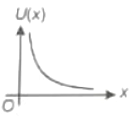
2. 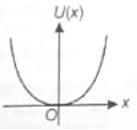
3. 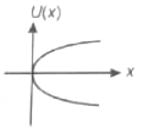
4. 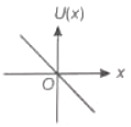




The variation of potential energy U of a body moving along x-axis varies with its position (x) as shown in figure
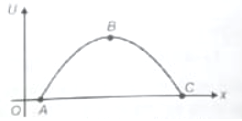
The body is in equilibrium state at
1. A
2. B
3. C
4. Both A & C
A uniform chain of length L and mass M is lying on a smooth table and one third of its length is hanging vertically down over the edge of the table. If g is acceleration due to gravity, the minimum work required to pull the hanging part of the chain on the table is
1. MgL
2.
3.
4.
A block of mass m moving with velocity v0 on a smooth horizontal surface hits the spring of constant k as shown. The maximum compression in spring is
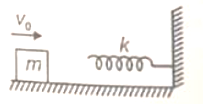
1.
2.
3.
4.
For a particle moving under the action of a variable force, kinetic energy-position graph is given, then
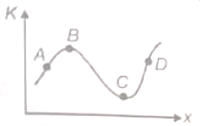
1. At A particle is decelerating
2. At B particle is accelerating
3. At C particle has maximum velocity
4. At D particle has maximum acceleration
A particle moves with the velocity under the influence of a constant force, N. The instantaneous power applied is
1. 5 W
2. 10 W
3. 20 W
4. 30 W
A body is projected from ground obliquely. During downward motion, power delivered by gravity to it
1. Increases
2. Decreases
3. Remains constant
4. First decreases and then becomes constant
A body of mass m accelerates uniformly from rest to velocity v1 in time interval T1. The instantaneous power delivered to the body as a function of time t is
1.
2.
3.
4.
The power of a pump, which can pump 500 kg of water to height 100 m in 10 s is
1. 75 kW
2. 25 kW
3. 50 kW
4. 500 kW
A U-238 nucleus originally at rest, decays by emitting an -particle, say with a velocity of v m/s. The recoil velocity (in ms-1) of the residual nucleus is
1.
2.
3.
4.






